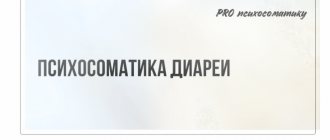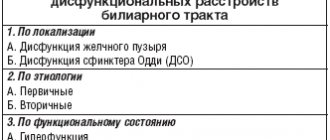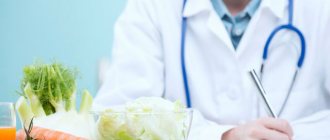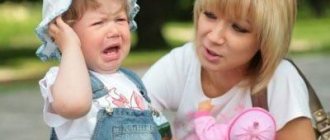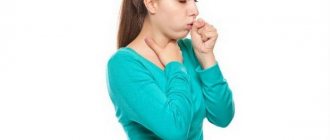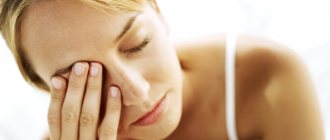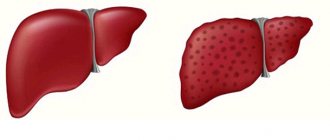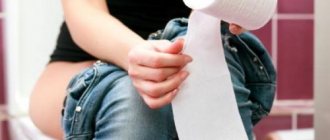A bend or inflection of the gallbladder is a deformity acquired during the patient’s life or a congenital deformity. As a result, serious obstacles arise to the normal outflow of bile.
Typically, this pathology appears after a sick person has suffered cholecystitis and cholelithiasis. Sometimes the disease can be a consequence of excessive physical activity or lifting heavy weights.
Also, bending of the gallbladder often occurs when internal organs prolapse and a significant degree of obesity. Typically, this pathology is detected during an ultrasound scan for other diseases of the liver or gallbladder.
It manifests itself in severe pain, a significant decrease in appetite, nausea, and a bitter taste in the mouth. Treatment of the disease consists of taking choleretic drugs prescribed by a doctor and following a special diet.
In the article we will consider in detail the appropriate diet, give an example of a menu, formulate basic rules and recommendations for an appropriate diet that will help with a bend in the gallbladder.
What should the diet consist of?
Therapeutic nutrition for this disease can significantly improve the outflow of bile, reduce its viscosity and density. Thanks to the inclusion in the diet of certain foods that are easily digested in the body, the motor function of the gallbladder is well stimulated.
This diet will be effective for any type of illness:
Allowed
You can safely consume the following products:
- fish dishes. They can be eaten boiled or baked, as fish contains easily digestible protein;
- vegetable and cereal soups with the addition of any sunflower oil;
- boiled, stewed with vegetables or baked chicken, rabbit, turkey or beef;
- fresh vegetable salads. It is necessary to add vegetable oil to them;
- any fermented milk drinks and cottage cheese;
- milk, which will be especially beneficial in sauces and cereals;
- low-fat sour cream and cream;
- low fat content butter in small quantities;
- mild and low-fat cheese;
- eggs, which are used in various dishes;
- porridge or casseroles from cereals;
- sweet fruits, compotes, juices, mousses;
- chicory, tea with milk;
- honey, jam, marmalade, dried fruits;
- dried bread and crackers.
Forbidden
Alcohol is prohibited when the gallbladder is bent.
If you do not refuse it, then negative processes in the body will rapidly develop. The following foods can cause deterioration in health:
- any hot seasonings, especially red pepper;
- fresh baked goods, baked goods;
- fried or fatty foods;
- alcohol;
- meat, fish and mushroom broth;
- liver, brains, kidneys;
- pickled and canned foods;
- smoked meats;
- sausages in any form;
- fatty fish, such as mackerel;
- mayonnaise, ketchup and fatty sauces;
- coffee, chocolate, cocoa, carbonated sweet drinks.
Why do babies have stomach ache?
Why do babies have stomach ache?
With such a childish, but not at all simple question, we turned to NATALIA VASILIEVNA AVDEEVA - Candidate of Medical Sciences, member of the Russian Gastroenterological Association, multidisciplinary medical gastroenterologist.
— Natalya Vasilievna, hello. Tell us about the abdominal pain that occurs in babies? For example, colic - what is its cause and what should parents do?
— There are indeed many reasons why a child may have a stomach ache. In infants, the cause may be so-called “colic,” both physiological and caused, for example, by food allergies. Prevention of food allergies, if breastfeeding is impossible for any reason, is the use of medicinal mixtures that contain split cow's milk protein and a reduced amount of lactose. This reduces the load on the child’s digestive tract, allows him to maintain normal digestion, and reduces the risk of gas formation and other manifestations. Another common cause of abdominal pain in a baby is cholestatic disorders (bile retention). This problem can arise against the background of teething, violation of the schedule for introducing complementary foods (early introduction, products not recommended for age). This is determined by ultrasound of the abdominal cavity. To correct these disorders, choleretic drugs are used. Stool disorders (diarrhea, constipation), as a rule, overlap with the above reasons. Another manifestation of food allergies is skin rashes. Of course, there are a number of diseases that give similar symptoms, but most often mothers of young children face precisely these problems.
— Now tell us about children of preschool and school age. Are there diseases that cause abdominal pain that are not related to the gastrointestinal tract?
— Various gastrointestinal diseases can also cause abdominal pain. Gastritis, duodenitis, cholecystitis, colitis, etc. But even, for example, with pneumonia there can be abdominal pain. Of course, it has its own symptoms - fever, intoxication, respiratory disorders, but abdominal pain, as a nonspecific sign, can accompany pneumonia. With kidney disease - pyelonephritis, not only the lower back, but also the stomach can hurt. With neurological diseases against the background of increased regular psycho-emotional stress, autonomic disorders of the nervous system, children may complain of nausea, abdominal pain, motion sickness in transport. The causes of abdominal pain can be various infections, both parasitic and intestinal. Preschoolers have helminth infections, giardiasis, enterovirus and rotavirus infections. In schoolchildren, one of the causes of abdominal pain may be injuries received from falls, bruises, etc.
— Schoolchildren often suffer from gastroduodenitis. Why do they appear?
— Gastroduodenitis is considered a chronic pathology, but it can occur without exacerbations for several years. Heredity plays a huge role in the occurrence of the disease. If close relatives have diseases such as gastritis, peptic ulcer of the stomach and/or duodenum, gastroesophageal reflux, then the risk of gastroduodenitis in children is much higher. If, for example, increased acidity occurs, there is a risk of these diseases. May increase the risk of inflammatory changes and taking certain medications, food allergies, infections, motor disorders of the upper digestive tract.
— How to monitor children with gastritis?
— These children need dynamic monitoring. As you know, gastrointestinal diseases worsen in spring and autumn, therefore, it is during these periods that follow-up visits to a gastroenterologist and instrumental and laboratory examinations are recommended. It is known that the immune system of both general and local immunity of the mucous membranes of the digestive tract in spring and autumn has a predisposition to the development of inflammation, which leads to the appearance of a disease or an exacerbation of an existing one. Therefore, during these periods, treatment is indicated: choleretic therapy, enzyme preparations, cytoprotectors - antacids, vitamins, including the use of physical therapy, which reduces the drug load on the body and lengthens periods of remission.
— Parents often hear from doctors about a bend in the child’s gallbladder. What is this and what are the dangers? What advice can you give to parents?
— The bends of the gallbladder can be fixed or labile. Sometimes, bringing the child to the next ultrasound, the mother says: “How can this be? Last time there was a bend, but now they can’t find it. Where did he go?" This is quite possible - this is a labile bend of the gallbladder. As soon as the condition improves, the underlying disease is compensated, this excess may disappear. The bend itself is not dangerous if there are no other reasons causing bile stagnation. Now, if there is an inflection point, and even, for example, the presence of duodenitis or gastroduodenitis, motor disorders of the upper digestive tract, giardiasis, or a systematic violation of nutrition and diet, then the inflection point may be one of the factors that systematically retains bile and contributes to the further development of cholecystitis, gallstone disease. If a child has a bend in the gallbladder, it is recommended to monitor his diet, preventative intake of choleretic drugs or herbs in spring and autumn (if there are no allergies). Chamomile is preferable; rose hips have a higher risk of allergic reactions. The usual preventive course consists of two months in the following regimen: courses of two weeks for two months in a row (two weeks on, two weeks off, two weeks on).
— They say that the diagnosis of “dysbacteriosis” as such does not exist. What to do if a child is diagnosed with this?
— There really is no such diagnosis in the international classification of diseases. This condition may become a risk for the development or progression of any pathology. The intestinal mucosa normally has a mucoid gland secretion system and parietal microflora. And if this complex is not disturbed, then the body’s defenses are working in full force, which is of great importance for health. Firstly, the risk of allergies is low, and secondly, the presence of dysbiotic disorders can have a very bad effect on the course of a variety of diseases due to the increased load on the organs with toxins.
There are no tests that would be available in practical healthcare and at the same time be the “gold standard” for diagnosing dysbiosis. As shown by many studies, stool culture for dysbacteriosis is far from ideal. However, we still use it in practice in children of the first year of life. There is also an indirect analysis that does not show the presence of microbes, but indicates a change in the biochemical composition of the microflora - a biochemical analysis of feces for short-chain fatty acids. A decrease or increase in the level of these acids will indicate a violation of the protective function of the intestines. There is also a stool test for carbohydrates, with which we can determine the presence of lactase deficiency. These studies can be useful to us in diagnosing intestinal disorders in children.
In addition, additional studies are needed to establish the correct diagnosis:
- Ultrasound of the abdominal organs.
- In addition, children of early, preschool and primary school age undergo ultrasound examination of the esophagus, stomach and duodenum, which allows identifying pathology at an early stage without resorting to invasive studies (for example, fibrogastroduodenoscopy)
- Laboratory research:
— general clinical: general blood test, general urinalysis, scatology
- biochemical blood test - Asat, Alat, bilirubin, amylase, etc.
- fecal analysis for worm eggs and protozoa
— enzyme immunoassay blood test - determination of antibodies to parasites, Helicobacter pylori and other infections that may cause abdominal pain
— PCR test of blood and feces to determine the DNA of the pathogen
- bacteriological analysis of stool for dysbacteriosis
4) consultations with specialists - gastroenterologist, allergist-immunologist, infectious disease specialist, pediatrician, neurologist, pediatric surgeon, physiotherapist
All these studies and consultations with specialists can be completed at the Alexandria Clinic at 50 Gagarin Ave. and 65 Osharskaya Street
Nutrition rules
If the gallbladder is bent, it is recommended to use dietary table No. 5 in your diet. For this disease, you need to eat food in small quantities. In this case, breaks in the patient’s diet should not be more than 4 hours. It is not advisable to eat very cold or hot dishes at all. You need to drink about 2 liters of warm water per day. Salads should be seasoned with vegetable oil, as it stimulates the release of the hormone cholecystokinin.
You can also drink medicinal mineral waters: Smirnovskaya, Essentuki.
The menu should include foods with dietary fiber that is beneficial for the liver, that is, vegetables, fruits, and herbs. Lactic acid products rich in calcium prevent the formation of stones and alkalization of bile. They also need to be eaten.
Remember that foods high in cholesterol, simple carbohydrates and refractory animal fats are prohibited. This leads to severe thickening of bile, provokes inflammation of the gallbladder, and stimulates the precipitation of cholesterol stones.
Bend of the gallbladder in children
Conservative therapy
Treatment of gallbladder kinks and its complications begins with the selection of a diet.
Fried foods are excluded from children's diets, and the content of animal fats and salt is limited. Products are prepared by steaming, boiling or baking. Prepared food should be warm, relatively homogeneous, without rough or hard pieces. Children are fed 4-6 times a day in small portions; they are not overfed or forced to give food. To stimulate bile secretion and correct the functioning of the gallbladder, a course of mineral waters is selected. The amount of therapeutic liquid is calculated according to the proportion of 3 ml of water per 1 kg of body weight of children. For the biliary tract, the most useful are “Essentuki No. 4, No. 17” and “Borjomi”. Mineral water is given 30-40 minutes before meals to thin the bile and facilitate its secretion.
Drug treatment of complicated kinks is prescribed secondarily if the symptoms are not eliminated with the help of other conservative measures. An exception is cholecystitis, caused by stagnation of bile in a deformed organ. In this case, antibacterial drugs are used immediately after diagnosis. Treatment of dyskinesia and other chronic consequences of the anomaly includes the following medications:
- Prokinetics
. The drugs stimulate the contractile activity of the digestive tract, including affecting the motor function of the gallbladder. They improve the movement of chyme through the gastrointestinal tract, eliminate stagnation in the intestines, relieve heaviness in the abdominal cavity, nausea, and other dyspeptic symptoms. - Choleretic agents
. Choleretics and cholekinetics are taken to make bile more liquid and improve its excretion into the intestines. Under the influence of medications, the dull pain in the right hypochondrium disappears, heaviness, vomiting and belching after finishing a meal decrease. - Enzymes
. If cholecystopancreatitis occurs in children with a kinked bladder, pancreatic enzymes are used to improve food digestion. Treatment with enzyme preparations activates cavity and parietal digestion, promotes the absorption of nutrients through the intestinal mucosa. - Hepatoprotectors
. Medicines are indicated to protect liver cells from the harmful effects of bile acids. More often, UDCA drugs are recommended, which have cytoprotective, cholelitholytic, immunomodulatory and antioxidant properties.
Surgery
Kinks of the gallbladder are classified as minor developmental anomalies that do not require mandatory surgical correction. The help of a pediatric surgeon is necessary if the defect is accompanied by constrictions, underdevelopment or other anatomical deformations of the organ, causing bile stagnation and acute pain. In rare cases, surgical treatment of kinks is prescribed when they are complicated by inflammation of the bladder and ducts, and the formation of stones.
Sample menu and delicious dishes
- Cereal porridge is best for breakfast It can be eaten with blackcurrant jam or any other jam. You can use tea with milk as a drink.
- For second breakfast, you can eat vegetable or fruit puree. As a drink, jelly or compote would be an ideal option. For lunch, it is better to prepare vegetable borscht, to which you can add low-fat sour cream. It’s a good idea to add buckwheat porridge with chicken to your diet as a second dish.
- For an afternoon snack , you can use cottage cheese dessert with banana and drink dried fruit compote.
- For dinner , you can cook lean fish, make a salad of fresh vegetables with olive oil and make a drink from chicory.
- At night you can eat yogurt with oat bran, but they need to be soaked in it in advance.
Cooking "delicious treats"
You may find the following dishes useful, which are not harmful to your health, but still have excellent taste:
| Squash with buckwheat and chicken | Buckwheat must be cooked before this. The minced meat is mixed with chopped onions and carrots and filled with peeled squash. You need to cut off the caps first. They are used to cover stuffed squash. Prepared vegetables should be baked in the oven for at least one hour. |
| Stuffed pike | The pike is thoroughly cleaned of scales and all entrails are removed. The onion should be stewed a little in water until half-cooked and then turned through a meat grinder. The same should be done with fish fillets and bread soaked in water. Then add protein, salt and chopped parsley to the minced meat. The pike is filled with minced meat and wrapped in gauze. You need to cook the fish in water for about 1.5 hours. |
How long should food restrictions be observed?
In case of exacerbation of the clinical manifestations of this pathology, it is advisable to use only a milk-curd diet. At this time, grapes, apples, dried fruit compote, practically not sweet, are allowed. Diet table No. 5 according to Pevzner will subsequently help normalize the functioning of the gallbladder when the main symptoms subside. This diet will need to be followed at all times.
You can print out the following reminder and stick it on your refrigerator to help you remember which treats to avoid and which foods are welcome:
